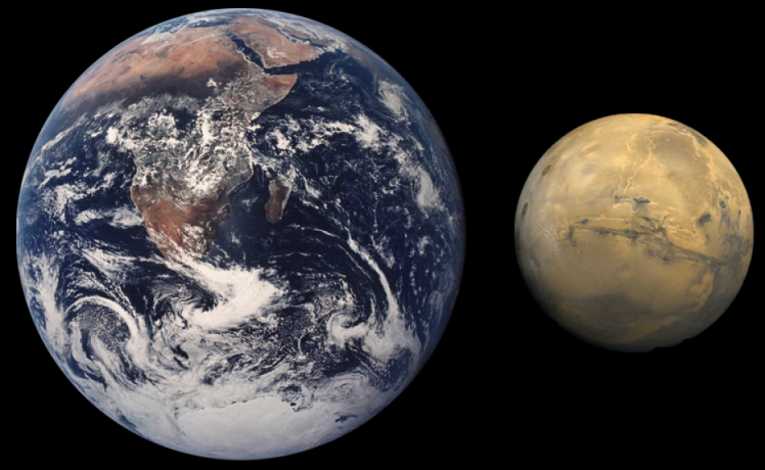It is known that siderophile, or metal-loving elements such as gold and platinum are common to the mantles of Earth, the Moon and Mars and new research has shown that massive impactors delivered this abundance during the final phase of planet formation over 4.5 billion years ago.
The predicted sizes of the projectiles that hit within tens of millions of years after the giant impact that produced our Moon are consistent with current planet formation models as well as physical evidence such as the size distributions of asteroids and ancient Martian impact scars.
It is predicted that the largest of these late impactors on Earth were between 1,500 and 2,000 miles in diameter and potentially knocked the Earth about 10 degrees off its axis. It is thought that those hitting the Moon were approximately 150 to 200 miles in diameter and may have delivered water to its mantle, while those hitting Mars would have been between 900 and 1,100 miles across.
The team that conducted this study represent three teams within the NASA Lunar Science Institute and included solar systems dynamicists and geophysical-geochemical modellers from the Southwest Research Institute, the University of Maryland and the Massachusetts Institute of Technology.
A fundamental problem that has always taxed scientists is how the Earth, the Moon and the other inner solar system planets were formed and evolved. A particular difficulty is that billions of years have passed since these events took place and much of the evidence has been steadily erased. In spite of this there are still clues to be found if one knows where to look.
For instance, after lunar samples brought back by Apollo astronauts were carefully studied and combined with numerical modelling work, there were clear indications that the Moon was formed about 4.5 billion years ago following a collision between a Mars-sized body and the Earth.
At one time the idea that the Earth-Moon system was the result of one single random event was regarded as a very radical view, but it is now accepted that such large impacts were commonplace during the latter stages of planetary formation. These impacts are believed to have led to a final phase of core formation and global magma oceans on both the Earth and Moon.
However, if this giant impact hypothesis is correct scientists would have expected the siderophile elements to have all been blasted to the Earth's core, leaving a rocky crust and mantle that was completely void of these elements, but this is not the case and these elements are not missing at all.
The proposed answer to this conundrum is that although the siderophile elements were stripped from the mantle by the effects of a giant impact, they were later partially replenished by later impacts from the original building blocks of the planets known as planetesimals.
The last surviving planetismal populations in the inner solar system are the asteroids, the largest of which in the inner belt is Ceres, at 600 miles across.










